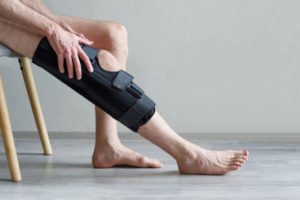
Did you recently suffer an injury due to negligence?
After an injury recovery, you want to seek the compensation you deserve. But, you may wonder about the accident lawsuit timeline. This can include filing a lawsuit, going to court, and even winning the case.
Knowing the steps of a personal injury lawsuit timeline is crucial to your overall case. For a successful case, you need to understand what steps occur before and during the case. To learn more, continue reading below.
Initial Consultation and Hiring an Attorney
The journey toward a personal injury lawsuit typically begins with an initial consultation with a personal injury lawyer. This consultation is often free and allows you to discuss your case, ask questions, and determine if you have a viable claim.
During this meeting, you can also assess whether you feel comfortable working with the attorney. Trust and open communication are essential throughout the process.
If you decide to move forward with your case, you’ll hire an attorney to represent you. They will help you gather evidence, assess the strength of your claim, and explain the legal process ahead. To ensure the best legal service, check out the personal injury lawyer located here.
Investigation and Gathering Evidence
After hiring an attorney, the next step in the personal injury case timeline is the investigation phase. Your attorney will work to gather evidence to support your claim.
This may involve collecting police reports, accident reports, and any available surveillance footage. They may interview witnesses and get their statements.
It is also important to gather medical records and reports related to your injuries. Consult with experts if necessary, such as accident reconstruction specialists or medical professionals.
You must document your damages, including medical bills, property damage receipts, and evidence of lost wages. The strength of your case often depends on the quality and quantity of evidence gathered during this phase.
Pre-Filing Negotiations
Before filing a lawsuit, your attorney may engage in pre-filing negotiations. It involves the at-fault party’s insurance company or legal representatives. These negotiations can often result in a settlement without the need for a lawsuit. But, reaching a fair settlement can be challenging, and it may take some time.
During this stage, your attorney will present the evidence and demand compensation on your behalf. The opposing party may respond with a settlement offer. This will be negotiated until both sides reach an agreement or decide to proceed with a lawsuit.
Filing the Lawsuit
If pre-filing negotiations fail to yield a satisfactory settlement, your personal injury attorney will file a lawsuit on your behalf. This step initiates the formal legal process and is often referred to as the “complaint” or “petition.”
The complaint outlines the details of your claim. This includes the facts of the accident, the legal basis for your claim, and the compensation you are seeking.
Once the lawsuit gets filed, the opposing party (the defendant) will be served with the complaint and will have a specified time frame to respond. Typically, the defendant will file an “answer,” admitting or denying the allegations in your complaint.
Discovery
The discovery phase is a critical part of the personal injury lawsuit timeline. During this stage, both parties exchange information and evidence relevant to the case.
Discovery allows both parties to gain a deeper understanding of the case’s strengths and weaknesses. This can be a lengthy process, depending on the complexity of the lawsuit.
Motions and Pre-Trial Proceedings
Either party may file motions with the court. These motions can address various issues. These include requesting summary judgment or requesting the exclusion of certain evidence.
The court may also schedule pre-trial conferences. This will discuss case management and potential settlements. There are also other matters related to trial preparation.
Settlement Negotiations and Mediation
Throughout the personal injury lawsuit timeline, opportunities for settlement negotiations can arise at various stages. If a fair settlement offer is made by the defendant, you and your attorney will need to decide whether to accept it or proceed to trial.
Mediation is another alternative dispute resolution process. It can help parties settle.
A neutral mediator assists in facilitating discussions between you and the defendant. This is to find common ground and resolve the case without going to trial.
Trial
If settlement negotiations and mediation do not result in an agreement, the case will proceed to trial. The trial is the culmination of the personal injury lawsuit timeline. It involves presenting evidence and arguments to a judge and, in some cases, a jury.
During the trial, both parties will present their case. This includes witnesses, experts, and documentary evidence. The judge or jury will then decide on liability and, if applicable, the amount of compensation you’re entitled to receive.
Post-Trial Motions and Appeals
After the trial concludes, there is still the possibility of post-trial motions and appeals. Either party may file motions requesting a new trial or challenging the court’s decisions.
Appeals can extend the duration of the legal process. It may be several months or even years before a final resolution is reached.
Enforcement of Judgment
If you are successful in your personal injury lawsuit, and the court awards you compensation, you will need to take steps to enforce the judgment. This may involve various methods to collect the awarded damages, such as garnishing wages, placing liens on property, or seizing assets. This depends on the defendant’s financial situation.
Conclusion and Settlement of Liens
Once the judgment gets enforced, you can finally conclude your personal injury lawsuit timeline. But, it’s important to settle any outstanding liens related to your case.
These may include medical liens or health insurance subrogation claims. It may also involve liens from other parties who provided services related to your injuries.
Rebuilding and Moving Forward
After your personal injury lawsuit concludes, you can begin the process of rebuilding your life. The compensation you receive can help cover medical expenses, lost wages, property damage, and pain and suffering. It’s essential to use these funds wisely to ensure a secure future and address any ongoing medical or rehabilitation needs.
Understand the Personal Injury Lawsuit Timeline Now
Understanding the personal injury lawsuit timeline is crucial for anyone pursuing a claim. From gathering evidence to negotiating a settlement, each step has its importance and timeframe. By familiarizing yourself with this process and seeking legal advice, you can ensure a smooth and successful outcome.
Don’t wait, take action and protect your rights today. Contact a reputable personal injury lawyer to learn more and take the first step toward justice.
For more helpful, interesting, and fascinating reading, keep exploring our blog for more!







